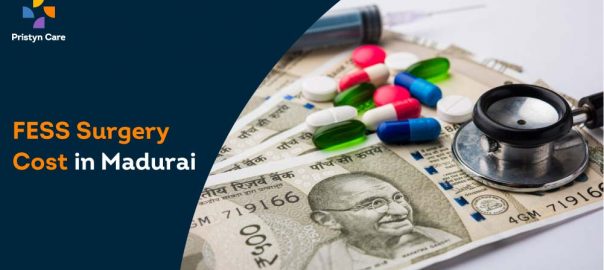![]() Views: 6,829
Views: 6,829
Types of Nose Surgery | Different Types Of Nasal Surgeries
For instance, people with chronic sinusitis can consider functional endoscopic sinus surgery or FESS as a permanent solution.
Dedicated Support at Every Step!
Our Doctors are available 24 hours a day, 7 days a week to help you!
Table of Contents
Rhinoplasty
Rhinoplasty is mainly aimed to correct the appearance of the nose. The cosmetic nose reshaping mainly alters the bone and cartilage of the nose to enhance how the nose appears. Rhinoplasty entails any one of the following-
- Reduce or increase the size of the nose
- Change the angle between the nose and upper lip
- Change the angle between the nose and bridge of the nose
- Narrow the nostrils
During a rhinoplasty, the ENT doctor can restructure the nose internally or externally. In the internal procedure, there is an incision inside the nose whereas, in the external one, the doctor makes an incision outside the nose.
No Cost EMI, Hassle-free Insurance Approval
4 Types of Rhinoplasty Surgery
Reduction Rhinoplasty
The main aim of undergoing a reduction rhinoplasty is to reduce the size of the nose. In this procedure, the ENT doctor can sometimes reshape the nose too. This is done by removing the cartilage from the nose. In this surgery, the overall size of the nose is reduced or specific areas are removed.
Augmentation Rhinoplasty
With the help of tissue or bone grafting, the doctor builds up the bridge of the nose. By taking tissue from the nasal septum, the ENT doctor cures the nose. When there is not sufficient tissue present for grafting, then the doctor relies on artificial materials to augment the nose. In addition to nose reconstruction, patients may also have to undergo skin grafts for better results.
Post-traumatic Rhinoplasty
As the name suggests, this nose surgery is for people who have had an injury or been in an accident that has damaged their nose. The type of damage can be manifold- broken bones, damaged cartilage, changes to the nose that are visible externally, deviated septum and difficulty breathing.
Corrective Rhinoplasty
Also known as reconstructive rhinoplasty, doctors generally recommend this surgery when an initial cosmetic nose surgery has failed to provide desired results. This can include either a reduction or augmentation rhinoplasty. This is a very complex procedure hence, the patient might have to go multiple surgeries.
Also Read: How to clean the nose after Rhinoplasty?
Septoplasty
Septoplasty is the correction of a deviated nasal septum. Due to deviated septum, people may suffer from a stuffy nose. The septum can get deviated due to an injury or trauma to the nose or maybe present since birth. The nasal septum moves to one side of the nose and can significantly obstruct the airflow coming inside the nose. Performed on the basis of an outpatient procedure, the surgeon either removes extra pieces of bone or cartilage or simply moves the deviated septum into its appropriate position. Patients with cleft defects that affect the nasal cavity can also undergo a septoplasty.
Read More: What is Endoscopic Septoplasty?
Rhinoseptoplasty
This is a type of nasal surgery which is performed on the external nose and nasal septum. In comparison to other nose surgeries, this is more complicated. Moreover, this includes both a rhinoplasty and septoplasty. Therefore, the procedure includes the realignment of the deviated septum and changing the appearance of the nose. The ideal person who should undergo a rhinoseptoplasty is someone who is suffering from nasal scoliosis, aquiline nose, saddle nose or deviation of the nasal septum.
Turbinate reduction
Before talking about the surgery, let’s understand what exactly turbinates are. There are small bony structures, inside the nose that help to clean and humidify the air that enters the nasal cavity. Due to allergies, irritation or infection, these turbinates can swell and lead to nasal obstruction and production of mucus. In the past, this was reduced by opening the nose manually and correcting it.
Read More: Coblation Technique To Reduce Enlarged Turbinates
However, at present with the help of radiofrequency transmitted through a needle-like instrument inside the nose, the turbinates can be reduced. This allows the patient to recover faster with minimal pain.
In addition to the above-mentioned surgeries, there are some additional nasal surgery that patients can undergo-
- Ethmoidectomy
- Polypectomy
- Functional Endoscopic Sinus Surgery
- Balloon Sinuplasty (Read More: Effectiveness of Balloon Sinuplasty)
- Alarplasty surgery
Who should consider a nasal surgery?
If a person who has one or more conditions from the following list, should consider a nasal surgery-
- Difficulty breathing
- Suffering from deformities present since birth or due to injuries
- Willing to change the shape of the nose
- Have repeated episodes of obstructive sleep apnea
Conclusion
The effects of each kind of nose surgery will be different as each person’s body is unique. Hence, before undergoing the surgery be certain that you actually want to go through the whole procedure. Before the surgery clear all your doubts you have related to the procedure including possible risks, how to take care during the recovery process, and even cost.
Read More: Cost of Nose Surgery in India










